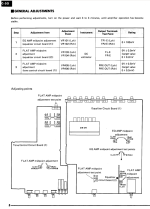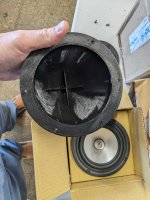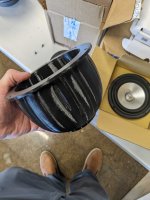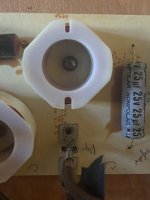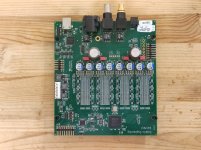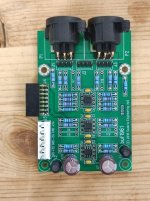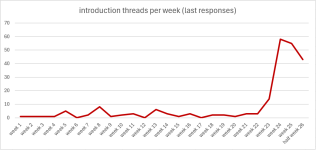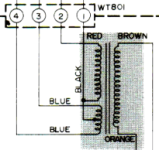SB17NAC35 with SB26ADC build - Please help
I built my speakers from a kit 20 years ago and am a relative newbie to diy speakers. A little knowledge is a dangerous thing so I’m here to ask you for some advice.
I’m a theatre buff and looking to “refresh” my 20 year old speakers with a new tweeter, woofers and crossover. Currently, I have the Vifa d25ag tweeter and two P17WJ 6.5 inch woofers in very pretty 50 litre ported enclosures. The centre speaker is a different shielded kit that never really matched the L/R’s. The surround, rear and sub are Wharfdale and I’ll keep them for a while.
I was very happy with the Vifa’s but have since ordered the Anthem MRX 1120 and plan to put in 4 new ceiling speakers with enclosures. I was considering the RSL C34E ceiling speakers but they are expensive once imported into Australia. For the same price, I can build my own which has the advantage of using the same tweeters, drivers and effective enclosure volumes to match the main speakers, ensuring the same timbre from each.
I’m after an accurate, low distortion and a flat response curve that will carry audio down to 90 hz where my subwoofer crosses over. The fronts are 50 litres with holes for a 1 inch tweeter, two 6 inch woofers and 2 ports. My plan is to use:
Front speakers:
SB26ADC-C000-4 (recessed 18mm to time align to woofers)
SB17NAC35-8 (2 drivers run in parallel from a single crossover to appear as 4 ohms and increase power handling and sensitivity)
50 litres, 2 ports, 2000 hz / 2nd-order Linkwitz-Riley crossover
Ceiling speakers (in enclosures angled at 45 degrees down directed at my seat):
SB26ADC-C000-4 (recessed 18mm to time align to woofer)
SB17NAC35-4
25 litres, 1 port, 2000 hz / 2nd-order Linkwitz-Riley crossover
Reasoning:
I like the idea of these drivers since they reportedly have low distortion and a flat response curve at a good price and don’t seem to break up as badly as other aluminium drivers. I live in the tropics (hot and very humid) so paper drivers are out of the question.
Ceiling speakers: The sensitivity of the 4 ohm tweeter and 4 ohm woofer are the same so no attenuation is necessary.
Front speakers: These need more power than 60 watts so I’ll use 2 woofers. The 8 ohm version of the woofer has sensitivity about 3.5 db less than the tweeter. By running two 8 ohm woofers in parallel from a single crossover, it will increase sensitivity by 3 db so no other attenuation is necessary. These should sound the same as the ceiling speakers but handle more power.
Enclosure volumes: The SB site gives the main values of SB17NAC35-4 as:
Diameter: 12.26 cm, Fs: 32 hz, Qts: 0.32, Vas: 33 litres – giving an enclosure of 19 litres (per driver)
www.audioexcite.com >> SB Acoustics SB17NAC35-4 tested the SB17NAC35-4 as:
Diameter: 12.26 cm, Fs: 37 hz, Qts: 0.42, Vas: 21 litres – giving an enclosure of 26 litres (per driver)
Questions:
Are these drivers the most accurate reproduction across the range at this price and if not, which are significantly better?
Will these give me a big improvement over the 20 year old Vifa’s?
Will this go low enough to seamlessly meet the subwoofer at approx. 90 hz or should I go for a 3 way system?
Are the enclosure volumes okay? I’ll use an online calculator for the ports. I can stuff the speakers with solid blocks to reduce volume if it is too big.
Is a 2000 hz / 2nd-order Linkwitz-Riley crossover the best option?
Is using two 8 ohm drivers in parallel the best option for the mains and will it sound the same as a single 4 ohm in half the enclosure volume?
Is setting the tweeter back 18mm necessary to time align to the woofers (I read that it should be 18mm for a similar combination
Yet another 6+1 construction: SB17MFC35-8 + SB26ADC-C000-4 )?
Am I supposed to invert the tweeter connections on the crossover to make sure phase is correct or this accounted for by the 18mm offset?
Any other advice? - Thanks!



